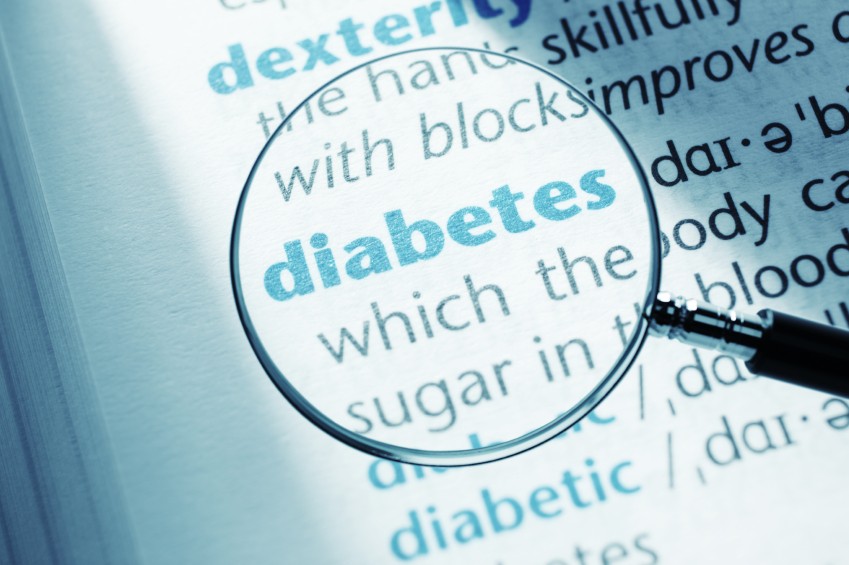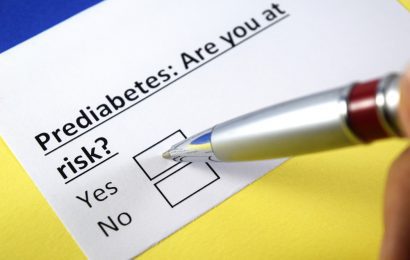Most likely, you knew very little about diabetes before you learned that you had it. After your diagnosis, your next few doctor visits were probably a crash course in diabetes: learning how to check your blood glucose level, inject insulin or follow a schedule for taking pills, adjust your eating habits, etc. Your doctor may also have mentioned what diabetes is and what causes it in this blitz of information, but with so much to learn at once, you may not remember what he said — or remember him saying anything at all on these topics.
It can be difficult to take in so much new information at one time, especially when you are just learning diabetes terminology and adjusting to the idea of having diabetes; many people find they miss a lot of the background information about the underlying causes of their diabetes. However, understanding how and why diabetes develops can help you to be an active member of your diabetes-care team.
The two main types
Diabetes mellitus, usually referred to as just diabetes, is characterized by a high blood glucose level. There are several different types of diabetes, each with a unique underlying cause. The most common forms are Type 1 diabetes and Type 2 diabetes. Both are considered chronic diseases, meaning that once diagnosed, they don’t go away. Blood glucose levels that are higher than normal but not high enough to be diabetes are now called prediabetes. For descriptions of other types of diabetes and related conditions, see “Types of Diabetes.”
Type 1 diabetes used to be called juvenile or insulin-dependent diabetes, and Type 2 diabetes was called adult-onset or non-insulin-dependent diabetes. The American Diabetes Association now favors the terms Type 1 and Type 2 diabetes, which are defined based on the underlying cause of the diabetes, not on a person’s age at diagnosis or treatment method.
Type 1 diabetes
Type 1 diabetes occurs when the body’s immune system launches an attack against the insulin-producing beta cells in the pancreas. Why the immune system does this is not completely understood, but it is thought that both genetics and some sort of environmental trigger are involved.
Certain combinations of genes make some people more likely to develop Type 1 diabetes, but having a genetic tendency alone is not enough: Not everyone at increased risk for Type 1 develops it. For instance, in identical twins (who by definition have the exact same genetic makeup), when one twin has Type 1 diabetes, the other twin also develops it only 50% of the time. It is believed that for a genetic tendency toward Type 1 to be “expressed,” a person must be exposed to an environmental “trigger” that sets the autoimmune process in motion. Many potential triggers have been proposed, including viruses, bovine serum albumin (a protein in cow’s milk), hormones, and environmental toxins, but none have been definitively proven to lead to Type 1 diabetes.
Once the process is set in motion, the immune system produces antibodies to beta cells and to insulin and begins to destroy them. (Under normal circumstances, antibodies seek out and flag harmful foreign substances within the body, such as bacteria or viruses, for destruction.) This process starts many years before diabetes is diagnosed. In fact, it’s possible to identify people at risk of developing Type 1 diabetes by checking their blood for antibodies to beta cells and to insulin.
Over time, the quantity of insulin produced by the pancreas and the amount circulating in the bloodstream progressively decline. The resulting signs and symptoms of Type 1 diabetes, which include high blood glucose levels, weight loss, increased urination, hunger, and thirst, and large amounts of ketones in the blood and urine, generally occur only after a majority of the beta cells have been destroyed.
In the absence of insulin, glucose in the bloodstream cannot be transferred into cells as it normally would, resulting in high glucose levels in the bloodstream and a state of “starvation” within cells. The kidneys filter the excess glucose out of the blood, causing increased urination, thirst, and dehydration. Starving cells, no longer able to use glucose for energy, begin to use fat, resulting in loss of body fat and the production of ketones (chemical by-products of fat metabolism). If not treated (with insulin) in time, the combination of high blood glucose, high levels of ketones, and dehydration can lead to a very serious condition called diabetic ketoacidosis and, potentially, death.
Some people with Type 1 diabetes experience a “honeymoon” period after diagnosis, during which their pancreas regains the ability to produce insulin, and they require little or no injected insulin, but this generally lasts only a short time. Within a few months, most people have very little insulin-producing capacity and require an outside source of insulin.
Type 2 diabetes
Type 2 diabetes is much more common than Type 1 and has a stronger genetic link. (If one identical twin develops Type 2 diabetes, there is a 90% chance that the other one will also.) Symptoms of high blood glucose are less pronounced in Type 2 diabetes compared to Type 1 diabetes; because of this, diagnosis often occurs many years after diabetes initially develops. However, the damage starts even in the absence of acute symptoms: Blood glucose levels above normal are known to increase a person’s chances of eventually developing heart disease and other complications of diabetes.
Unlike Type 1 diabetes, Type 2 diabetes is not caused by an autoimmune attack. Instead, there are usually two underlying problems: insulin resistance and inadequate insulin production. Insulin resistance is when the cells of the body have a decreased response to insulin. Under normal circumstances, when blood glucose levels are high (after eating, for example), the pancreas releases insulin into the bloodstream. Insulin then interacts with muscle cells, fat cells, and other tissues, allowing them to transport glucose into the cells to be burned for energy or stored for use later.
In insulin resistance, these important messages do not get through. Remember playing “telephone” as a child, when one person would whisper a word to the person next to them, and that person would whisper what they heard to the next person, and so on down the line? By the time it got to the end of the line, the word had usually mutated to something completely unrecognizable. A similar breakdown in communication is thought to occur in insulin resistance, where the signal from insulin becomes garbled, and the cell does not respond normally, taking up much less glucose than normal.
When blood glucose levels remain high, the pancreas continues to secrete more insulin to compensate for its decreased effectiveness, and eventually, blood glucose returns to the normal range. Over time, however, the pancreas loses the ability to produce enough extra insulin to compensate for insulin’s decreased effectiveness, and blood glucose levels remain high. At this point, a person might be diagnosed with diabetes or prediabetes, depending on his blood glucose level at the time of testing.
The liver also plays a key role in regulating blood glucose level. It releases glucose to the bloodstream when the blood glucose level is low, and it stores glucose when the level is high. When the blood glucose level is high, insulin has the important role of signaling the liver to turn off glucose production and start storing extra glucose. But if a person is insulin resistant, the liver does not respond normally to insulin, so it continues to release glucose to the bloodstream even if the blood glucose level is already elevated, making it even higher.
Treating Type 2 diabetes
Treating Type 2 diabetes involves treating both underlying problems (insulin resistance and inadequate insulin production). An individual’s treatment may change over time as his degree of insulin resistance or ability to produce insulin changes. Many people still make a fair amount of insulin when they are initially diagnosed with Type 2 diabetes, so their treatment may focus mainly on decreasing insulin resistance. Ways to decrease insulin resistance include increasing physical activity, following a healthy meal plan, and losing weight (even losing as little as 10 pounds can make a difference). Certain drugs are also targeted to treat insulin resistance. Metformin (brand name Glucophage) decreases the amount of glucose made by the liver, and pioglitazone (Actos) and rosiglitazone (Avandia) make fat and muscle tissues more sensitive to insulin.
Other drugs address insulin deficiency by stimulating the pancreas to release more insulin, slowing the digestion of carbohydrate in foods, affecting certain hormones involved in blood glucose regulation, or preventing the kidneys from reabsorbing glucose into the bloodstream. Using one or more of these medicines and keeping carbohydrate intake moderate and spread out over the day can help the pancreas keep up with insulin needs. Ultimately, however, it is not unusual for many people with Type 2 diabetes to eventually need to take insulin injections to supply their bodies with enough insulin.
Many people with Type 2 diabetes see the progression to using insulin as a negative reflection on their ability to follow their meal plan, lose weight, or otherwise take care of their diabetes. But while there are always additional steps anyone could take to further improve their health, for most people, the need to use insulin to control their diabetes does not mean they lack willpower or the desire to take good care of their diabetes. It is simply a matter of disease progression and the decreased ability of their pancreas to continue producing supernormal levels of insulin.
Not just blood glucose
Diabetes is diagnosed based on blood glucose level, and keeping your blood glucose level in a near-normal range has been shown to prevent common complications of diabetes such as eye disease, kidney disease, and nerve disease. But blood glucose level is not the only concern in diabetes. High blood pressure and high blood fats (such as cholesterol and triglycerides) often occur along with high blood glucose and can also lead to complications, including heart disease. All of these concerns — blood glucose, blood pressure, and blood fats — should be addressed in a comprehensive diabetes treatment plan for good health today and to prevent diabetes-related complications down the road.





